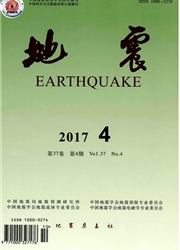

 中文摘要:
中文摘要:
2008年5月12日汶川发生M8.0特大地震,这次特大地震使得地球自身产生了整体的连续振动。本文采用地震发生之后中国数字地震台网(CDSN)所记录到的5天地震波形,对VHZ频段进行了功率谱密度分析。由于CDSN台网的地震仪对低频信号具有压制特点,所以没有对资料进行固体潮处理,从而获得了大地震激发的73个(0S4~0S76)基频球型自由振荡和6个谐频球型自由振荡(1S2,3S2,1S4,1S0,1S7,4S2),并与PREM模型的理论自由振荡周期进行了对比,结果表明观测振荡周期与PREM预测的振荡周期吻合很好。所得结果可以进一步用来研究地震震源机制和地球内部结构。并对大地震的震源破裂分布给出一定的约束。
 英文摘要:
英文摘要:
An M8.0 earthquake struck Wenchuan on May 12, 2008. The strong earthquake made continuous oscillation of the earth. Using the 5-day seismic waveform data recorded by China Digital Seismograph Network (CDSN) after the earthquake, we studied the data of VHZ channel by power spectral density estimation. Because the frequency response of seismograph in CDSN suppresses the information of low frequeney signal,we do not need to remove the solid tide in our data processing. So we extracted 73 spherical modes of 0S4 -0S76 Of the earth's free oscillation and other 6 modes(1S2, 3S2, 1S4, 1S0, 1S7, 4S2) and they are consistent and nearly same with the frequencies of the modes of Preliminary Reference Earth Model (PREM). The results can be used to invert focal mechanism of this earthquake and to explore the inner structure of the earth.
 同期刊论文项目
同期刊论文项目
 同项目期刊论文
同项目期刊论文
 期刊信息
期刊信息
